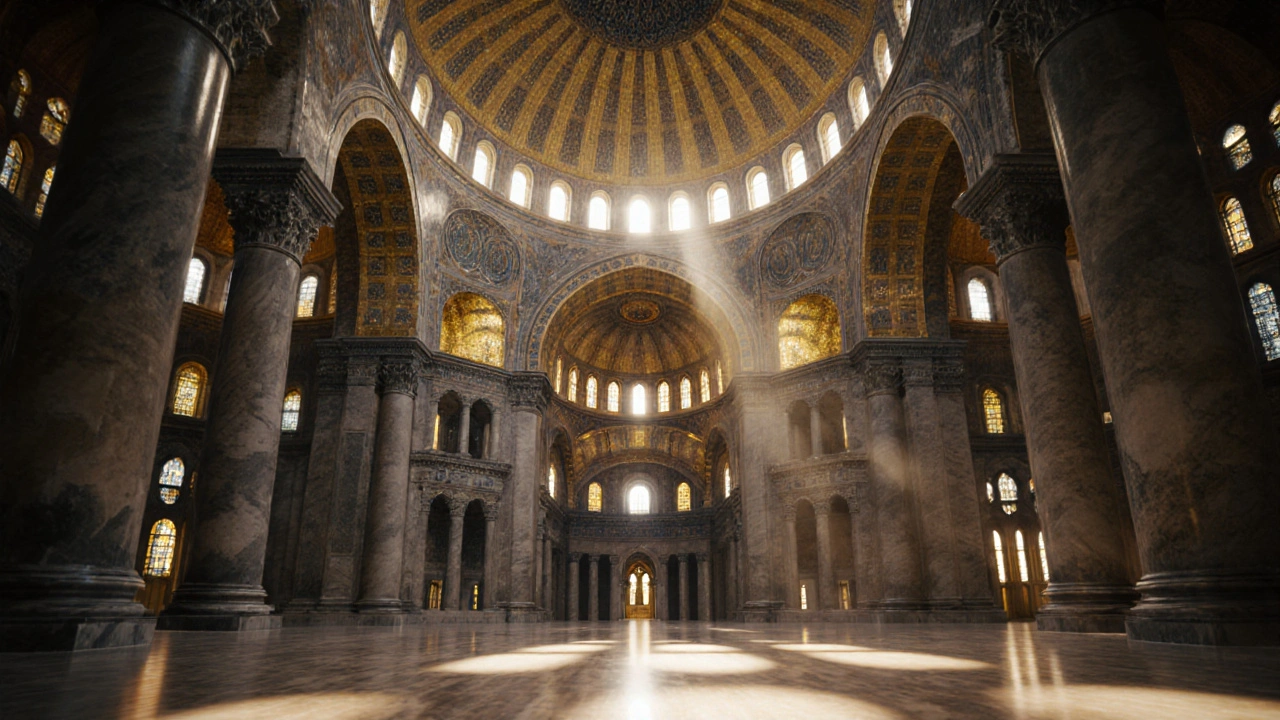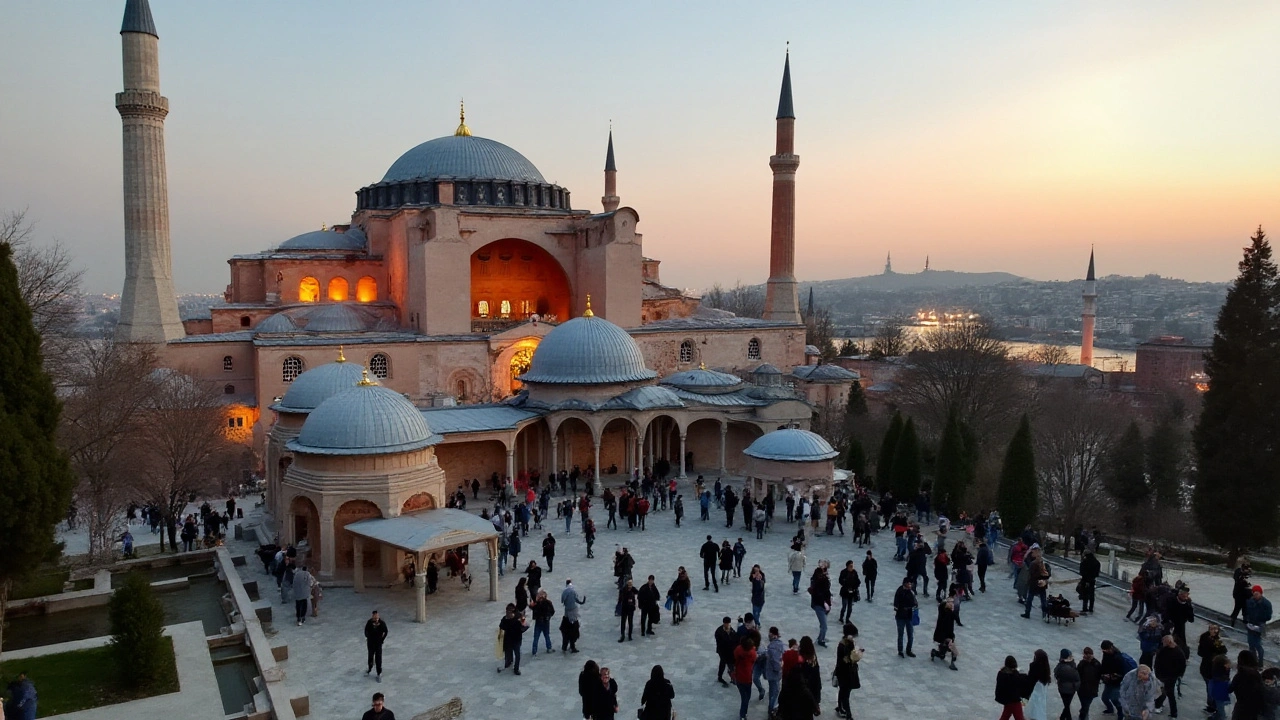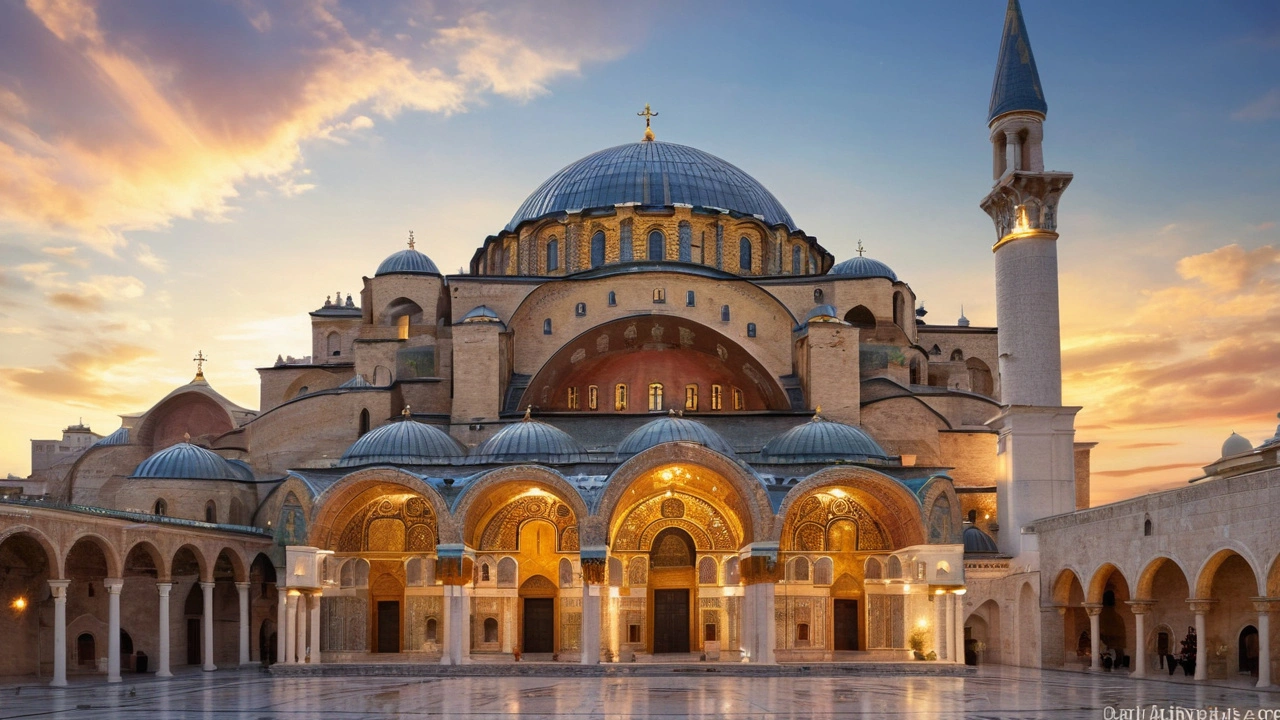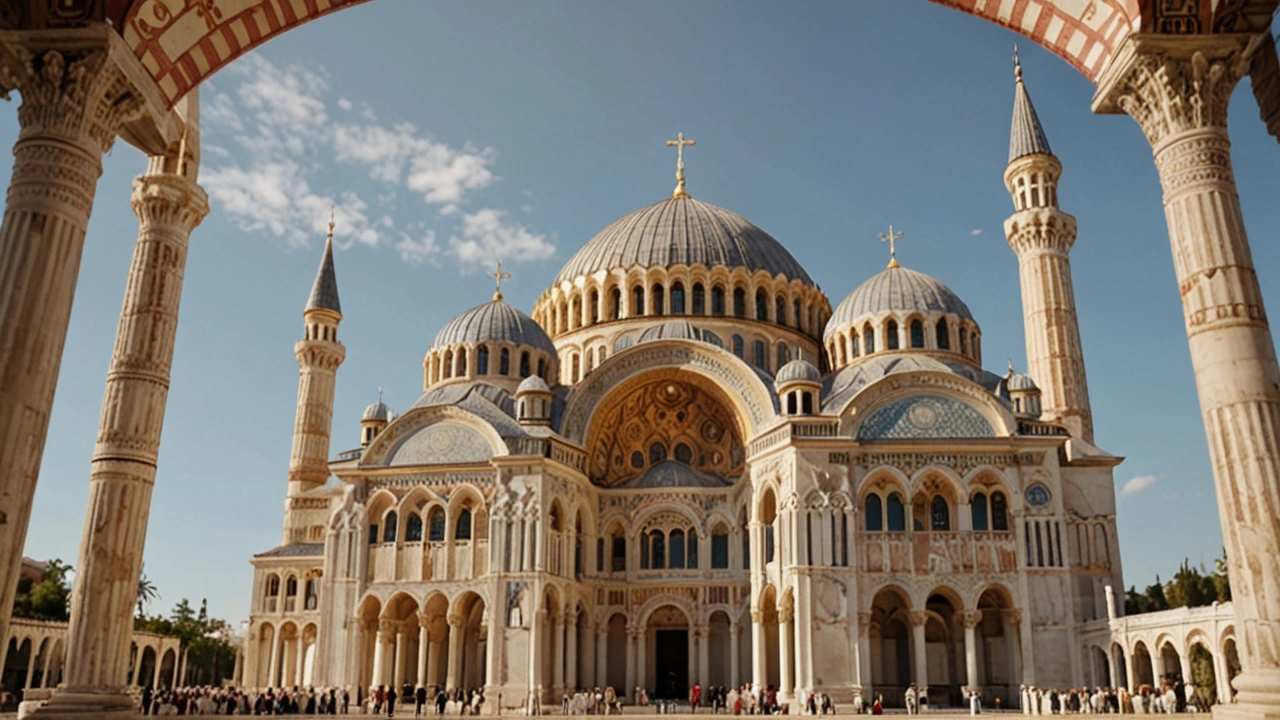Byzantine architecture used light, domes, and gold mosaics not just for beauty, but to create sacred spaces where heaven felt close. Its spiritual design still moves people today.
Byzantine Architecture: Domes, Mosaics, and Lasting Influence
Hagia Sophia’s dome was the skyline shocker of its day — a huge, suspended circle that felt almost magical. Byzantine architecture grew out of the Eastern Roman world from about the 4th to the 15th century. It mixes clever engineering with intense decoration so buildings feel both solid and otherworldly. You’ll mostly see it in churches, monasteries, and some imperial buildings.
Engineers solved a big problem: how to put a round dome on a square base. They used pendentives — curved triangular supports — to channel weight down to pillars, which made wide open interiors possible. Builders favored brick and layered mortar that give walls a warm, textured look. Central-plan layouts, where the main space sits under a dome, are common. Smaller domes, half-domes, and vaults often cascade off a main dome, creating complex rooflines that shape the interior experience.
Inside, Byzantine design goes for visual impact. Mosaics cover walls and ceilings with tiny glass and stone tiles set into gold leaf, catching light and making figures glow. Icons and painted frescoes guide worshippers’ focus toward the altar. Polished marble panels and carved stone add pattern and color. Light is part of the design — narrow windows and dome drums produce a soft, shimmering effect rather than bright, even daylight.
These buildings weren’t just pretty. Their forms and images reinforced religious ideas: the dome symbolized heaven, mosaics told sacred stories, and processional routes matched liturgical practice. Typical elements include a narthex entrance, a central nave or space, side aisles, and an apse at the east end. Many Byzantine churches also functioned as community centers and could be fortified when needed.
Key features to spot
Look for a central dome sitting over a square or octagon, supported by pendentives or squinches. Spot rich mosaics with lots of gold, stylized figures, and frontal faces. Check out layered brickwork and alternating courses of stone and brick. Interiors feel vertical yet intimate; light tends to be muted and directional. Exteriors are often simple while interiors go all out.
Why it still matters
Byzantine architecture shaped nearby cultures for centuries. The Ottomans reused Byzantine spaces and adapted dome-building methods. In Russia and the Balkans, Byzantine church layouts and icon programs evolved into local styles, including onion domes and iconostasis screens. Today, architects study Byzantine ways to span spaces and craft dramatic light. If you visit a Byzantine building, stand in the center, look up, and let the dome and mosaics tell the building’s story.
Bring a guidebook or an app to compare scenes and spot icon details. Allow time for quiet — these interiors reward slow looking. When photographing, use a wide lens and watch exposure so gold mosaics don’t wash out. Respect liturgy and signs; some areas close during services. If you care about conservation, support sites with donations or responsible tours that fund repairs. Read plaque information and hire local guides — they often share construction stories you won’t find online. Simple choices like these make visits richer and help keep Byzantine treasures standing for visitors and future generations.
Byzantine architecture represents a fusion of eastern and western elements, leading to grand and intricate designs that still captivate the modern world. This era gave rise to iconic structures rich in symbolism and technical innovation. By delving into its history, one can appreciate the unique characteristics and cultural significance of these architectural masterpieces.
Byzantine architecture stands as a magnificent testament to human creativity and devotion, featuring ornate designs, grand domes, and intricate mosaics. This article delves into the key elements, historical significance, and evolution of this distinctive architectural style. Discover how Byzantine structures have influenced modern architecture and the ways these ancient marvels continue to dazzle visitors today.
This article delves into Byzantine Architecture, exploring how it emerged as a confluence of various cultures. It highlights the unique design elements, historical significance, and the cultural influences that shaped this architectural style. Readers will gain insight into the rich history and artistic grandeur of Byzantine structures.
Explore the world of Byzantine architecture, a style marked by its intricate designs and immense influence on later architectural developments. Discover its origins, unique characteristics, and timeless appeal. This article breaks down the fascinating aspects of Byzantine architecture, providing useful insights and practical tips for readers interested in historical architectural styles.
Explore the captivating world of Byzantine architecture, a realm where religious fervor meets artistic brilliance. This article delves into the icons and imagery that define this magnificent architectural style, tracing its origins, evolution, and impact on contemporary design. From the iconic Hagia Sophia to the intricate mosaics adorning its interiors, discover how Byzantine architects and artists expressed their spirituality and creativity through structures that have stood the test of time. Learn about the symbolism, techniques, and motifs that underpin Byzantine architecture and how they continue to influence modern design principles.





